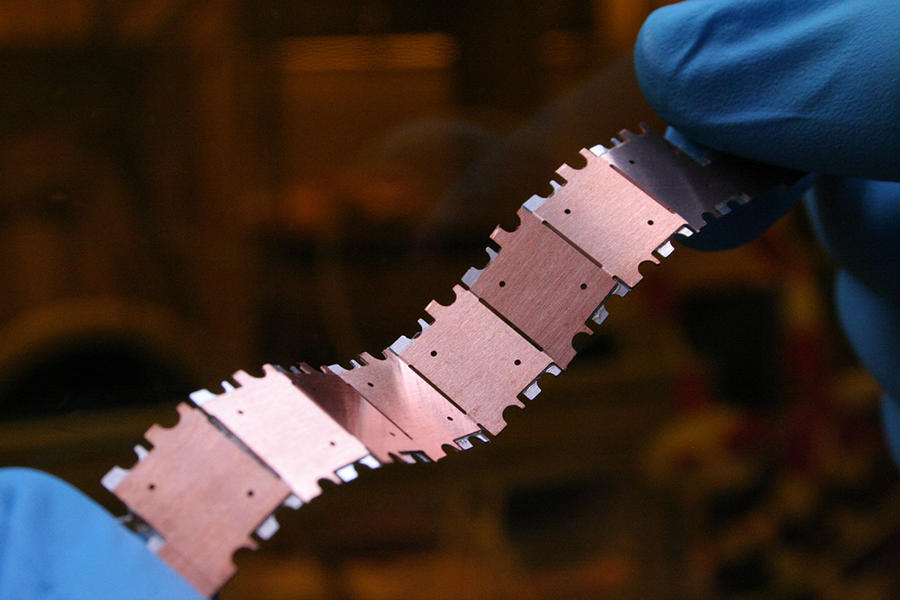Researchers from Fraunhofer IZM have developed incredibly small and lightweight pliable micro-battery. Scientists believe this could be open a new frontier in wearable technologies.
Related Stretchable, Bendable Electronic Circuits Could Give Way to Flexible Electronics
In medicine, wearables are used to collect data without disturbing patients as they go about their daily business – to record long-term ECGs, for instance. This is a convenient way to monitor a patient’s heart, because the sensors are light, flexible and concealed inside clothing. The technology can be applied in numerous other applications. This discovery could be a great news for the wearable technology market value, which is expected to reach 72 billion euros by 2020.
Finding a proper power source for these wearable devices poses a significant technical challenge. Several things must be considered when developing energy source for wearables – such as durability, energy density, weight, flexibility, size etc.
This is where Fraunhofer IZM comes in. Researchers at the institute have developed a prototype for a smart wristband that, quite literally, collects data first hand. The silicone band’s technical prize is its three gleaming green batteries, each of which contains a capacity of 300 milliampere hours.

These batteries supply the wristband with power. They can store energy of 1.1-watt hours. Additionally, they lose less than three percent of their charging capacity per year. The newly designed prototype has a much higher capacity than current wearables on the market. It even has the power to charge a smart watch without suffering any runtime loss.
Robert Hahn, a researcher in Fraunhofer IZM’s department for RF & Smart Sensor Systems, explains why segmentation is the recipe for success: “If you make a battery extremely pliable, it will have very poor energy density – so it’s much better to adopt a segmented approach,” he said.
Related Micro Batteries and Micro Molding Solutions for Your Business
“Instead of making the batteries extremely pliable at the cost of energy density and reliability, the institute turned its focus to designing very small and powerful batteries and optimized mounting technology. The batteries are pliable in between segments. In other words, the smart band is flexible while retaining a lot more power than other smart wristbands available on the market,” said Fraunhofer Press Release.
Furthermore, since the battery is the strap in the device, there’s more space within devices such as smartwatches that can be allotted to additional electronics, making them ever more powerful.












